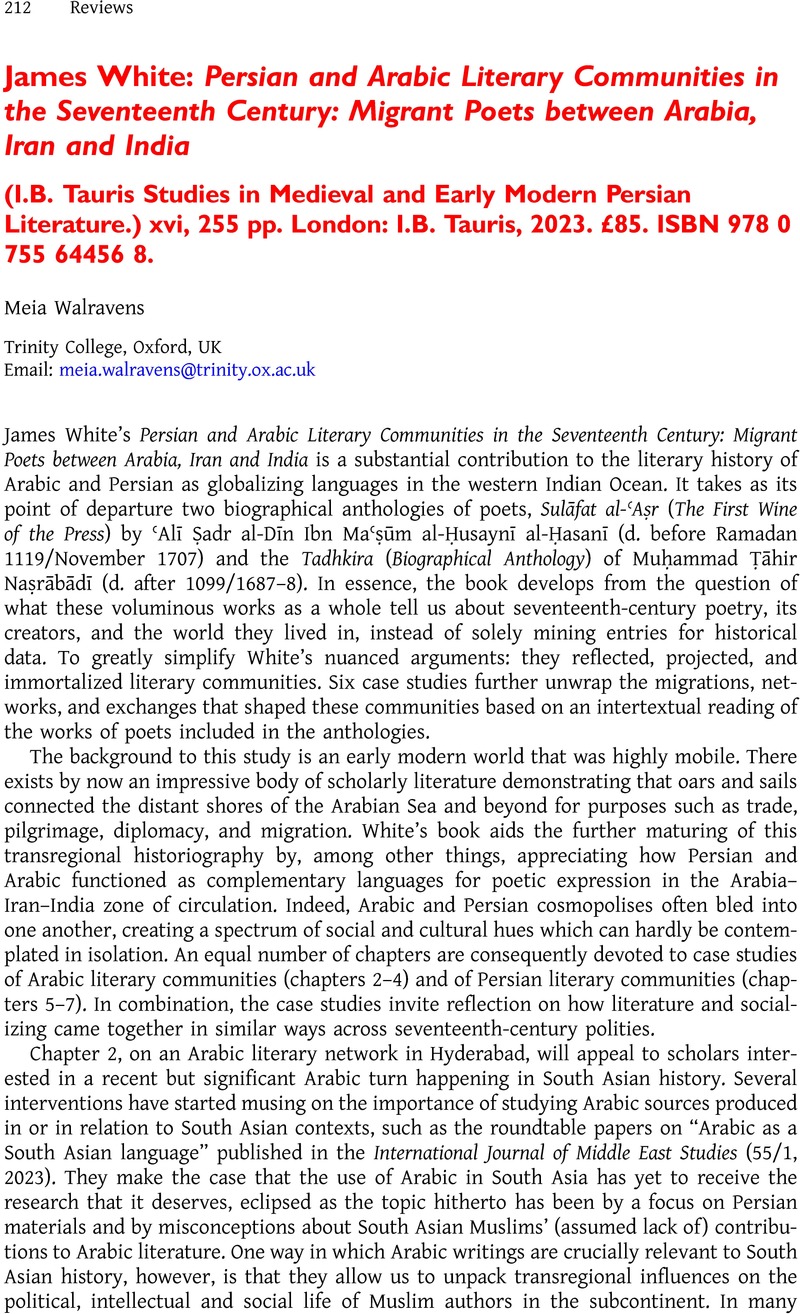No CrossRef data available.
Article contents
James White: Persian and Arabic Literary Communities in the Seventeenth Century: Migrant Poets between Arabia, Iran and India (I.B. Tauris Studies in Medieval and Early Modern Persian Literature.) xvi, 255 pp. London: I.B. Tauris, 2023. £85. ISBN 978 0 755 64456 8.
Review products
James White: Persian and Arabic Literary Communities in the Seventeenth Century: Migrant Poets between Arabia, Iran and India (I.B. Tauris Studies in Medieval and Early Modern Persian Literature.) xvi, 255 pp. London: I.B. Tauris, 2023. £85. ISBN 978 0 755 64456 8.
Published online by Cambridge University Press: 19 February 2024
Abstract
An abstract is not available for this content so a preview has been provided. Please use the Get access link above for information on how to access this content.

- Type
- Reviews
- Information
- Copyright
- Copyright © The Author(s), 2024. Published by Cambridge University Press on behalf of SOAS University of London



